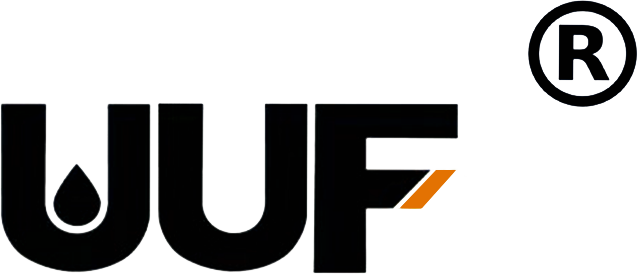The Effects of Extreme Temperatures on Hub Oil Seals: Understanding Performance and Durability
Time:
2025-05-19
The Effects of Extreme Temperatures on Hub Oil Seals: An In-Depth Exploration Table of Contents Understanding Hub Oil Seals Importance of Temperature Control in Hub Oil Seals How Extreme Temperatures Affect Hub Oil Seals The Science Behind Oil Seal Material Selection Impact of High Temperatures on Hub Oil Seals Consequences of Low Temperatures on Hub Oil Seals Best Practices for H
The Effects of Extreme Temperatures on Hub Oil Seals: An In-Depth Exploration
Table of Contents
- Understanding Hub Oil Seals
- Importance of Temperature Control in Hub Oil Seals
- How Extreme Temperatures Affect Hub Oil Seals
- The Science Behind Oil Seal Material Selection
- Impact of High Temperatures on Hub Oil Seals
- Consequences of Low Temperatures on Hub Oil Seals
- Best Practices for Hub Oil Seal Maintenance
- Frequently Asked Questions
- Conclusion
Understanding Hub Oil Seals
Hub oil seals play a vital role in the performance and longevity of various machinery and vehicles. Positioned at critical points, these seals prevent the leakage of lubricating oils and protect components from contaminants. Their effectiveness is tied directly to the materials used in their construction and the environmental conditions they encounter.
The Role of Hub Oil Seals in Industrial Applications
In industrial settings, hub oil seals are crucial for ensuring the smooth operation of bearings, gears, and other moving parts. They help maintain lubrication, which reduces friction and wear, ultimately enhancing the overall efficiency of machinery.
Common Applications of Hub Oil Seals
From automotive applications to heavy machinery and aerospace, hub oil seals are used in various domains. Their ability to function under different loads and speeds makes them indispensable in ensuring operational reliability.
Importance of Temperature Control in Hub Oil Seals
Temperature control is essential for the optimal performance of hub oil seals. Extreme temperatures can lead to premature failure, significantly impacting machinery efficiency and reliability.
Understanding Temperature Thresholds
Every material used in manufacturing hub oil seals has a specific temperature threshold. Exceeding these thresholds can result in material degradation, ultimately compromising the seal's integrity.
The Role of Ambient Temperature
Ambient temperature affects the performance of hub oil seals. High ambient temperatures can cause oils to thin, while low temperatures may lead to thickening, impacting the seal's ability to function correctly.
How Extreme Temperatures Affect Hub Oil Seals
Extreme temperatures, both high and low, can have profound effects on hub oil seals. Understanding these impacts can help in selecting the right materials and implementing best practices for maintenance.
Material Degradation at High Temperatures
High temperatures can lead to the breakdown of seal materials, causing them to lose their elasticity and hardness. This degradation can result in leaks and reduced performance over time.
Thermal Aging and Its Consequences
Thermal aging occurs when materials are exposed to high temperatures for extended periods. This process can cause the seal to become brittle, increasing the risk of failure during operation.
Effects of Low Temperatures on Seal Performance
Low temperatures can also adversely affect hub oil seals. At lower temperatures, materials can become stiff and lose their flexibility, making them less effective at maintaining a proper seal.
Fluid Characteristics in Low Temperatures
Cold weather can change the viscosity of lubricating fluids, impacting the overall performance of hub oil seals. Thicker fluids can lead to increased friction and wear, while insufficient lubrication can cause premature failure.
The Science Behind Oil Seal Material Selection
Choosing the appropriate material for hub oil seals is crucial for ensuring their performance in extreme temperatures. Different materials exhibit varying levels of resistance to thermal changes.
Common Materials Used in Hub Oil Seals
Materials such as rubber, silicone, and polyurethane are commonly used in oil seal production. Each material has unique properties that determine its suitability for specific applications and temperature ranges.
Evaluating Material Performance
Understanding how materials respond to temperature fluctuations is vital for selecting the right oil seal. Testing and evaluating the physical properties of materials can help ensure optimal performance in extreme conditions.
Impact of High Temperatures on Hub Oil Seals
As temperatures rise, the risk of hub oil seal failure increases. Identifying the specific impacts of high temperatures can aid in developing strategies to mitigate these risks.
Thermal Expansion and Contraction
High temperatures can cause thermal expansion of materials, potentially leading to misalignment within machinery. Conversely, when temperatures drop, contraction can result in gaps that allow oil to leak.
Preventing High-Temperature Damage
Implementing cooling systems or selecting high-temperature resistant materials can help prevent damage to hub oil seals in hot environments. Regular inspections and maintenance are also essential to identify early signs of wear.
Consequences of Low Temperatures on Hub Oil Seals
Just as high temperatures pose risks, low temperatures can also lead to significant issues in hub oil seals. Understanding these risks is critical for effective maintenance.
Increased Friction and Wear
Cold temperatures can increase the viscosity of lubricants, leading to higher friction levels. This increased friction can accelerate wear on both the oil seal and the components it protects.
Strategies for Cold Weather Operation
Using low-temperature viscosity oils and ensuring proper installation can help mitigate the adverse effects of low temperatures on performance. Regular maintenance checks are also crucial during winter months.
Best Practices for Hub Oil Seal Maintenance
To extend the life of hub oil seals, implementing best practices for maintenance is essential. Regular inspection and proactive measures can greatly reduce the risk of failure.
Regular Inspections and Monitoring
Conducting regular inspections allows for the early detection of potential issues. Monitoring for signs of wear, such as cracks or leaks, can help prevent more significant problems down the line.
Utilizing Advanced Monitoring Technology
Incorporating advanced monitoring technologies can provide real-time data on the performance of hub oil seals. Sensors can detect temperature fluctuations and alert operators to potential issues before they become critical.
Choosing the Right Replacement Seals
When it comes time to replace hub oil seals, selecting the right materials based on the specific operating environment is crucial. Understanding the temperature ranges and operating conditions will ensure optimal performance.
Frequently Asked Questions
1. What are the common signs of a failing hub oil seal?
Common signs include oil leaks, unusual noises, and increased friction in the machinery. Regular checks can help identify these issues early.
2. How often should I inspect my hub oil seals?
Regular inspections should be conducted at least every six months, with more frequent checks in extreme operating conditions.
3. Can hub oil seals be repaired, or do they need to be replaced?
In most cases, hub oil seals should be replaced rather than repaired. Damaged seals can compromise the integrity of the machinery.
4. What materials are best for high-temperature applications?
Materials such as silicone rubber and fluorocarbon elastomers are often recommended for high-temperature applications due to their superior heat resistance.
5. How can I extend the life of my hub oil seals?
Regular maintenance, using appropriate materials, and monitoring operating conditions are key to extending the life of hub oil seals.
Conclusion
The effects of extreme temperatures on hub oil seals are significant, impacting their performance and longevity. By understanding the challenges posed by both high and low temperatures, we can implement best practices for maintenance and material selection. Regular inspections, monitoring technology, and timely replacements are essential for ensuring the reliability of hub oil seals in various industrial applications. With proactive management, the risks associated with temperature extremes can be effectively mitigated, leading to enhanced operational efficiency and reduced downtime.
Keyword:
Hub oil seal


















